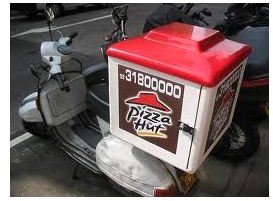A Review of Companies That Have an Employee Empowerment Culture
Companies reap the benefits of empowerment when they abandon the traditional top-down control-based management model and adopt an involvement model that engages every employee in strategic thinking and provides them with resources and opportunities to provide their best work output.
Firms engaging in such behavior gain in many ways, such as:
- Better employee performance, as everyone steps up for fear of being left behind
- Infusion of more perspectives and approaches to solve problems and exploit opportunities
- Unleashing innovation to improve products or services
Xerox
Xerox is a good example of how employee empowerment has pushed the company ahead. Xerox considers an empowered employee as someone who can do what is needed, subject “only to the boundaries of morals, ethics, law, process capability and price exposure” and without fear of reprisal for making a mistake. The company provides “line of sight” training to employees to make them realize how their role fits into upstream and downstream activities and has developed an extensive artificial intelligent process that documents and shares knowledge and floor level experiences across the board. The company also undertakes surveys on employees and customers to determine the state of empowerment achieved, and recognizes achievements.
Such initiatives have helped Xerox maintain its position as a $15.7 billion leader in document technology business for close to 100 years.
3M

The Minnesota Mining and Manufacturing Company. (3M) owes much of its success to empowering employees. The company promotes empowerment by spending lavishly on research and development, encouraging technical employees to spend 15 percent of their work time on research projects of their choice and promoting a culture of cooperation that transcends department boundaries. The result is a spate of innovative products such as Post-it Notes, which bring more than $100 million of revenues into the company every year, and routinely increases production gains many times over. The company reinforces the drive to innovate by celebrating and recognizing employees.
However, innovation is not a free for all at 3M. Employees submit new ideas at 3M, who reject them directly and honestly if they don’t make sense or aren’t feasible.
Yum! Brands

Yum! Brands Inc, the conglomeration that runs KFC, Pizza Hut, Long John Silvers, Taco Bell, and A&W instituted a policy of empowering every employee to make any decision up to $15.00, the price of a large pizza. Employees, far from giving away free pizzas actually took ownership when given responsibility. For instance, they assuaged dissatisfied customers by saying “I am so sorry we messed up your order, let me offer a discount of $10 for you.” or “I am giving you a free soda and salad with your order for the inconvenience of having to wait for longer than usual.” Such extra concern for customers resulted in increased loyalty, more and more customers coming back and a surge in profits.
Taco Bell has taken the empowerment route by flattening its management structure and increasing employee span of control. While this move has caused consternation among employees unable to cope with the enormous performance expectations, and who call the company “Taco Hell” the fact remains that such an initiative has helped the company and effect a remarkable turnabout in the last couple of years.
Southwest Airlines

Employee empowerment is a core value of Southwest Airlines. The company believes in a responsible workforce and limits the emphasis on formal organizational structure, entrusting decision-making powers to the individual worker or management committees.The result is positive workplace behavior with customers the being the direct beneficiary.
Once, when a passenger, also a famous author in a hurry forgot to carry his identity card with him, it created a problem at the airport check in counter, where verifying the passengers ID is now mandatory. Any other airline would first insist on a formal ID card, and then make the customer wait as the check in clerk asked his supervisor for authorization, who in turn forwarded the request to the manager, and so forth, until the passenger missed the flight. But not at Southwest. The empowered check in clerk could verify the identity of the passenger, an author from the cover of his published book, and let him through.
Such initiatives have allowed Southwest to become the carrier with the fewest customer complaints, a picture of operational efficiency with the fastest turnaround time, never having a history of any major accident, and weather the recession with considerable ease when others were struggling to stay afloat. In 1991, it was the only airline to post profits. The airlines fly 2,318 passengers per employee, the highest in the industry where the average is 848 passenger per employee for the industry.
Empowered Teams in Other Organizations
A careful analysis of successful corporations reveals that most of them have self-managed work teams, empowered to do what is required. Such self-directed teams are usually twice as productive compared to conventional controlled teams.
Empowered teams, for instance, achieved inventory level reductions of $6 million a year at Johnson & Johnson, and cut service errors by 13 percent at Federal Express. Such empowered teams are also a critical component of the popular Toyota Production System which has propelled the company to its current position as the market leader in the automobile segment.
Key Success Factors
Companies that have an employee empowerment culture implement practices that distribute power, information, knowledge and rewards throughout the organization. The benefits of empowerment usually derive when applying the concept to the entire organization, and not just in isolated pockets. Organizations that implement empowerment selectively create two classes of employees, and fail to get across a coherent message across to the workforce. Empowered departments or employees find it difficult and frustrating to engage employees or departments still in the control model, and employees in the control mode resent empowered employees.
Companies would also do well not to regard empowerment as a substitute to good management. In many organizations, empowerment becomes a cover up tool to shift damage control from the hands of the management to front line employees, or to straddle employees with more work. Empowerment fails when the enlarged scope of responsibilities do not come with job enrichment. Companies reap the benefits of empowerment when they enhance the required support, such as state of the art technology, updated market research, logistical support, and more, providing the empowered employee with the right tools to perform.
References
-
Image Credit:
- Xerox: flickr.com/Ken Bosma under CC 2.0 license
- 3M: geograph.org.uk/Roy William Shakespeare under CC 2.0 license
- Pizza Hut: flickr.com/Tracy Hunter under CC 2.0 license
- SouthWest Airlines: flickr.com/gTarded under CC 2.0 license <5. Bowen, David, E. and Lawler III, Edward. Center for Effective Organizations. “The Employee Empowerment Approach to Service.” http://ceo.usc.edu/pdf/G941244.pdf. Retrieved Augsut 18, 2011.
- Alyn, Kimberly. “The Power of Empowerment in Leadership.” Retrieved from http://www.kimberlyalyn.com/Articles/The%20Power%20of%20Empowerment.pdf on August 18, 2011.
- Williams, Ron. “Self-Directed Work Teams: A Competitive Advantage.” Retrieved from
http://www.qualitydigest.com/nov95/html/self-dir.html on August 18, 2011. - Nelson, Bob. 3M: “Building a Cultureof Empowerment” Retrieved from http://meetingsnet.com/corporatemeetingsincentives/meetings_building_cultureof_empowerment/ on August 18, 2011.
